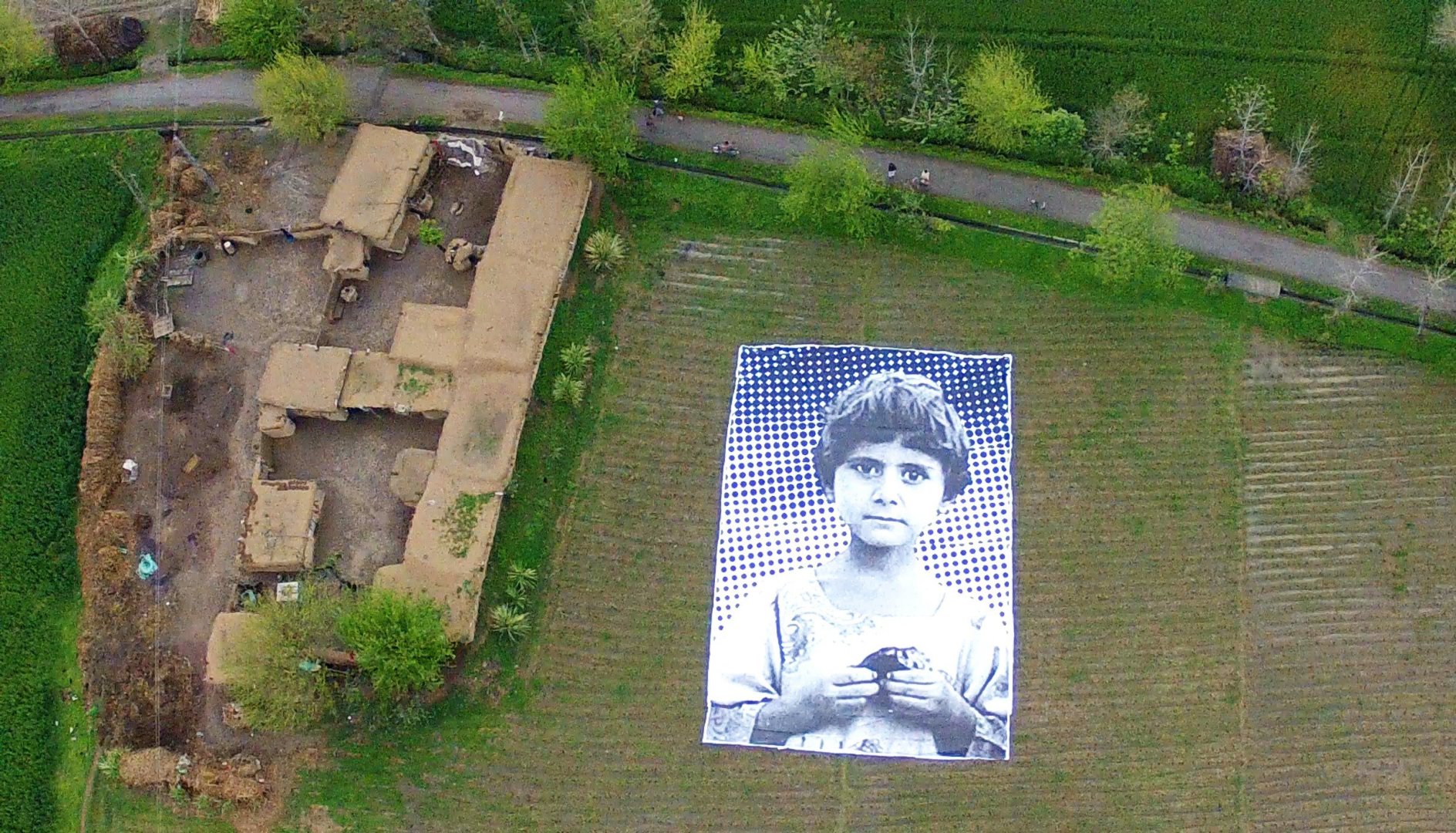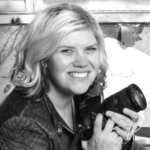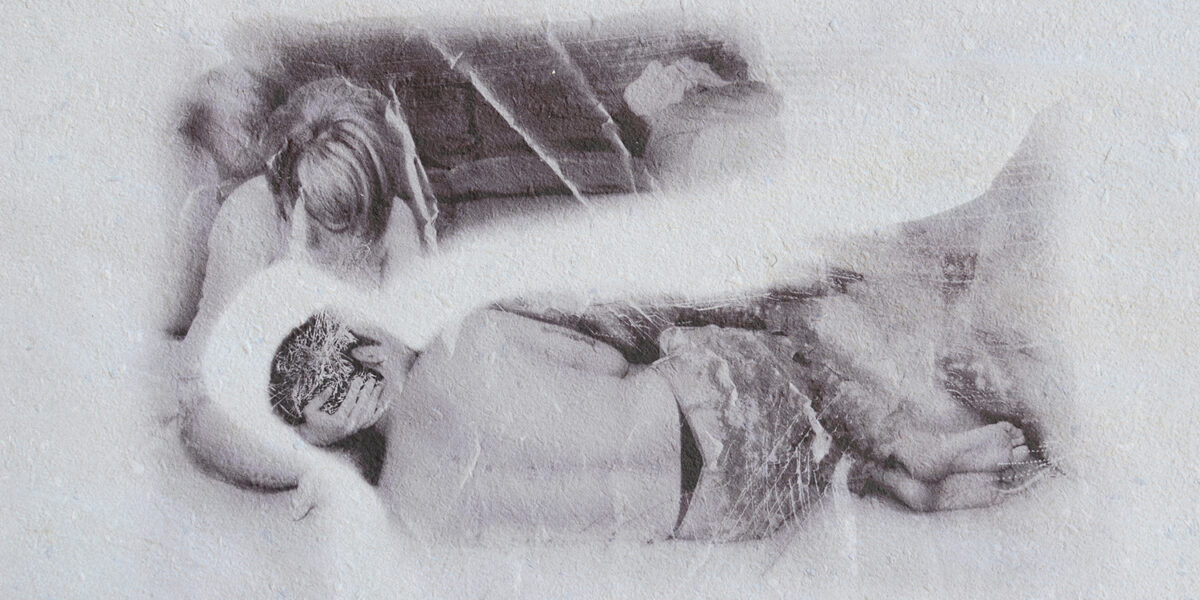This blog was originally published in November 2020.
It’s November 11th on Veterans Day in the U.S. and the usual “Thank you for your service” messages of love come to me via text and tags on social media. It happens every year, and every year I don’t know what to say. During most interactions, both myself and the person sending the message quickly move on — a bit awkwardly. It is awkward because the grief and sadness and confusion that lives inside that “thank you” remains unsaid. After leaving the military in 2011, for years I didn’t claim my veteran status. This changed when my graduate professor in my MFA program challenged me to use my art to lament on my grief and feelings of loss that have come from military service and use it to work towards creating the world I want to live in.
I was a senior in high school on September 11, 2001. The U.S. invaded Afghanistan on October 7, 2001, launching the ambiguous “war on terror” that has been waged by the U.S. for over 19 years — my entire adult life. I served in various locations and roles in the military and government service between 2004-2011. I’ve lost many people I’ve loved from the military at that time, including my former husband, and walked beside those struggling with their experiences. An entire generation of veterans constantly fights internal battles every day, and many lose that battle. This experience is not unique only to post 9-11 veterans. This struggle is also the experience of the generations of veterans who came before us.
What is unique is the number of veterans now speaking out and access to information and personal stories via technology. We are also now able to talk with the people via the internet living in the war zones and hear their experiences. It is an opportunity to truly begin to understand the collective suffering that war causes in a way that was not possible before the world wide web. The “enemy” is no longer a faceless, voiceless “other”. It is human – not so different from the Soldier. As painful as this acknowledgment is, it also paves way for shared understanding, stories, and lamentation.
A prime example of this is seen in the artwork of the Pakistani artist group who created imagery for drone pilots to show the human impact of drone attacks:

Read More about this image:
I have my own perspective and experiences, and for a long time, I had to be willing to reckon with them in order to place my own pain in the larger context of what the war on terror has done, not only to those I love but also to the rest of the world. I had to stay in that space for a while. It was a dark space that was sad and confusing. I realize that the generational trauma of war, many of them U.S.-led or backed, is being battled against by people around the world. War doesn’t just harm those who fight, but perpetuates violence for generations — everyone is impacted by it, even if they are not caught directly in the crossfire. War damages humans, both combatants, and non-combatants — coldly named “collateral damage” — while also destroying the earth and the environment. This is a painful realization, and when I came to it, it hurt deep in my body, soul, and psyche.
The fact is, I don’t want thanks. I want peace. Peace eludes many veterans that I know from my generation, my cousin’s (Gulf War), my uncle’s (Vietnam), and my grandfather’s (WWII) generations. Peace eludes the U.S. Peace eludes the world. Peace eludes me still, but not as much as it did before I made the space to lament.
The definition of lament is an expression of loss and grief, often through artistic expression. For the last five years, I’ve been working with other veterans, and organizations such as About Face: Veterans Against the War and Veterans for Peace, to create conversations, events, and artwork as a means to try to get to a deeper conversation about war, violence, PTSD, moral injury, and the concept of collective human suffering that results from war. I also work to create space for people to lament, and through that to experience shared grief and connect and hear each other’s stories. I believe it is through story that we will see each other anew, beyond the dehumanization that war brings.
Trish’s work can be seen here: veteranvoce.com
Armistice Day, established November 11th, 1919 at the end of World War I, — the “war to end all wars” — was meant to be a time for all sides to come together to collectively grieve, mourn their losses, and work together toward World Peace. Over time, this goal was forgotten, and World War II seemed to prove peace was an imaginary ideal. Eventually, the U.S. renamed November 11th as Veterans Day after World War II. In parts of Canada, Britain, it has become Remembrance Day and Remembrance Sunday. Each is now more about commemorating war and honoring veterans than taking time to connect on a larger level and mourn the havoc war has wrought on the world. All of these days of military recognition in November, regardless of name or location, are rooted in the original November 11th Armistice Day established by the Allied Nations. Armistice Day is still celebrated in France and Belgium.
I can’t help but lament how renaming Armistice Day to Veterans Day might have missed the point of Armistice Day’s inception in the first place — which was a call to end all war and rally people together for peace. There is a growing call among many U.S. Veteran organizations to reclaim Armistice Day.
Why did Armistice Day cease to exist? Is the goal of peace so far-fetched? Has the world given up on the dream of peace? Wouldn’t honoring Veterans mean more if we stopped waging war than giving Veterans an awkward thank you and a free cheeseburger? I know it would to me.
War and religion go hand in hand, and so I understand why many people ditch religious leaders altogether when discussing ideas of peace. One only needs to look at the story of Joshua to see such an example. Spiritual leaders worldwide can support the call for peace by lamenting the complexities of war and violence that exist in their own religious texts and complex cultural histories. This is why often when veterans speak of peace, it can be confusing. But it also creates a space to listen.
Thich Nat Hahn is quoted in A Lifetime of Peace by Jennifer Schwamm Willis (editor) as stating:
Veterans are the light at the tip of the candle, illuminating the way for the whole nation. If veterans can achieve awareness, transformation, understanding, and peace, they can share with the rest of society the realities of war. And they can teach us how to make peace with ourselves and each other, so we never have to use violence to resolve conflicts again.
Perhaps that is just a silly dream or an idea too extreme because many people believe that violence is inherent in humanity. At Religica, we suggest otherwise in our Response to Violence. I cannot give up on peace, and the belief that humanity can transcend violence in our world. I start this process by cultivating peace within myself.
I can’t find my peace, or at least something close to it, without reckoning with grief and sorrow first. It hurts – this search for peace. The world can’t reach peace without reckoning with its own stories of war and violence and feeling the accompanying loss and grief. We have to feel the pain to reach peace. We can’t skip lamentation and expect to find peace. Peace is found through lamenting — facing the deep and piercing grief as we walk through our shadows. It is only through embracing our shadows, individually and collectively, that we can transcend to peace.

Trish Brownlee is an artist, veteran, and Eclectic-Pagan-Unitarian-Universalist. She is the Creative Designer at Religica and the Center for Ecumenical and Interreligious Engagement at Seattle University. She earned her Master of Fine Arts degree from Pacific Northwest College of Art and Bachelor of Arts degree from Fayetteville State University. Trish is a disabled veteran and former military photographer and is the spouse of a disabled, combat veteran. After studying the history of art in war and the uses of art in veteran treatment programs during her master’s program, Trish is now using art as a tool for veteran advocacy and storytelling through Veteran Voce. Trish is a curator and artist, UX Designer, and owner of Sassy Bones Creative Emporium, living in Gig Harbor, WA.


